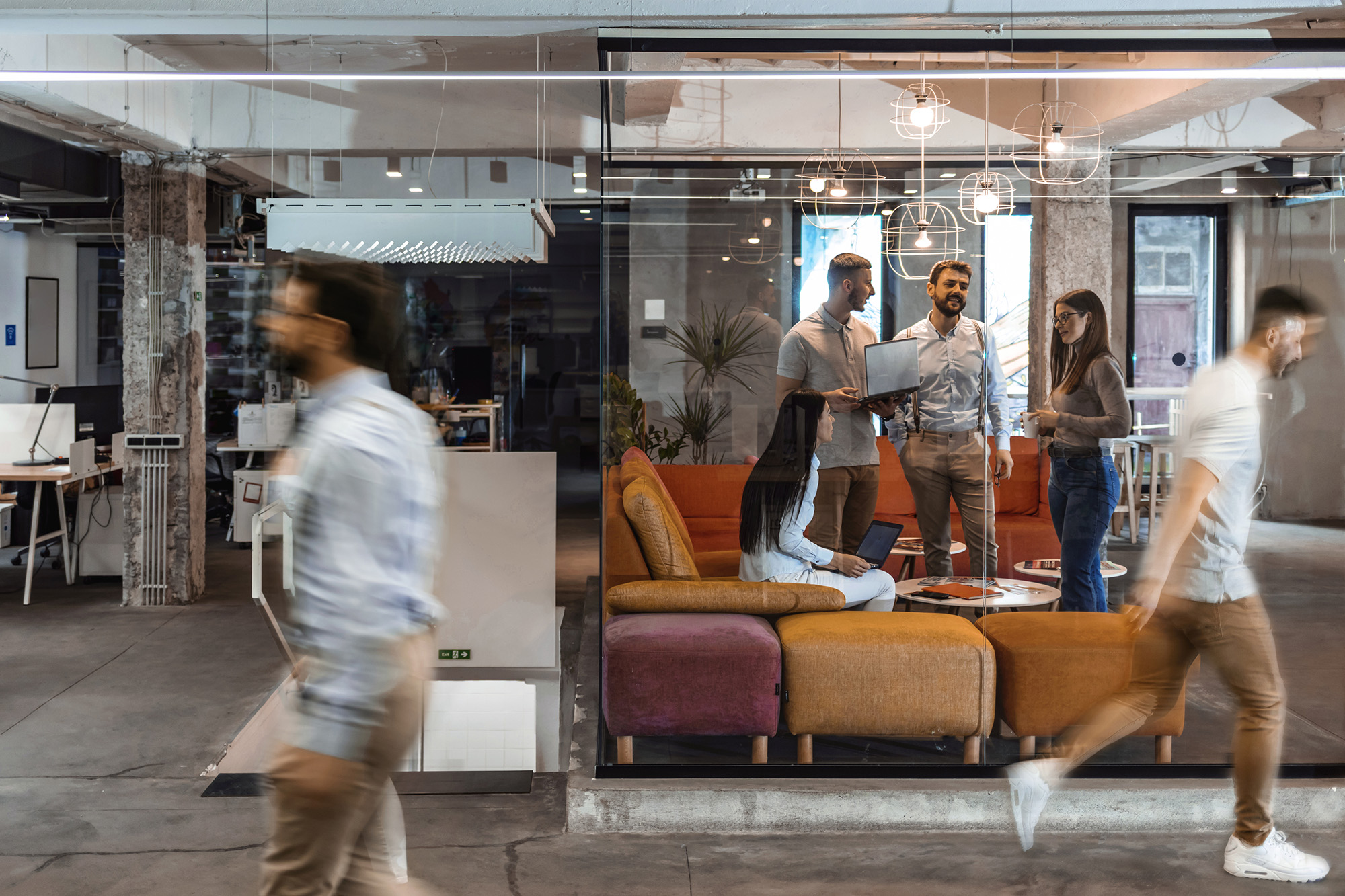
Today, for most people, work is not a destination, but something you do - in an office, at home, in a café, in the car, anywhere.
When the COVID-19 pandemic hit, employees and employers thought that WFH (working from home) was the only logical way forward.
Employees spoke enthusiastically about an improved work-life balance, while employers realised they would not need such a big workplace, plus their running costs would be reduced whilst top line/profits would increase. But the sudden move to full-time WFH was not without its drawbacks.
From working at a makeshift desk, to the lack of high-speed network connections to competing for bandwidth with other WFHers – the whole experience started to get stressful for many.
Add to that mix a deep sense of isolation for many (mainly young) people who were denied the banter and company of work peers, leading to an increase in mental wellbeing issues.
Hence the emergence of ‘Hybrid Working’. Now the talk is of the “3:2” or “2:3” models - either three days in the office and two at home, or vice-versa.
Hybrid working has redefined the working-in-the-office experience, in four specific areas:
1. Purpose
- The role of the workplace has changed
- People now tend to view their office time as an opportunity for client/team meetings, training sessions, collaboration with colleagues and partners, as well as a chance to meet with and enjoy the company of colleagues
2. Workspace
- How we use the workplace has evolved and the concept of settings is championed by workspace specialists Burtt-Jones & Brewer:
- ‘Primary‘ Settings’: desks used all day, by one person
- ‘Secondary Settings’: workstations for those who drop in and need a desk for half a day or less
- ‘Tertiary Settings’: for those who ‘pop-in’ for 30-60 minutes and just need a touch-down space
- More meeting rooms and collaboration areas
- More quiet zones for reflective/creative work
3. Wellbeing issues
- Today, there is greater focus on physical distancing, deeper cleaning of the workplace and better natural and mechanical ventilation at work
- Employers have started to create a more favourable mental wellbeing work-environment. Strategies adopted include:
- A greater focus on colour and use of natural materials (stone, wood, etc) throughout the office
- The introduction of more ‘biophilic’ (ie plants) features
- Replacing artificial lights with circadian/natural-light lightbulbs
- Reimagining offices to optimise the use of windows and natural light
- Considering how elevations can be introduced to counter the visual monotony of one plane floor spaces
- Creating more communal meeting and collaboration areas
4. Brand
- What do people actually want of their working lives? Recent data suggests that people are willing to swap their city homes for a longer commute from a greener location
- The 3:2/2:3 models are catalysts for this – it is cheaper and more pleasant to commute into cities, than to live in them
- Therefore, the workplace experience becomes more critical when developing strategies to attract and retain ‘talent’
- A workplace which reflects a company’s brand, culture and aspirations has become even more important than it ever was – what does our workplace say about us to our clients, prospective talent and partners?’
Productivity is no longer the only driver in a hybrid working world. The ‘work experience’ is now a critical factor in motivating talent to stay and to be more productive.
Flexible office solutions
Combining the (psychological) premium now placed on face-to-face meetings with employees’ desire not to commute using public transport, means some companies have started to develop a new workplace model.
A number have started to relocate their head office to smaller, more impressive premises in a more prestigious area, along with small local/regional ‘hubs’ for client and team meetings, to which employees can drive, cycle or walk.
Another hybrid working option is to include the flexibility of Serviced Offices in a company’s office mix. This enables companies to combine the flexibility of small suite of offices, with the option to book meeting rooms by the hour, with an attractive, well connected (in broadband terms) workplace environment.
Selecting the best workplace-mix to suit your budget, your strategic and commercial objectives and your occupational requirements can be daunting, time consuming and difficult to appraise (in terms of balancing costs, benefits and functionality), but it’s not impossible.
The workplace is historically a company’s second largest single business outgoing, that is why making an informed decision is so vital when weighing up budgetary issues, as well as the health and wellbeing of employees.
To find out how our commercial property specialists could help you, contact us today by calling one of our UK offices, or complete our online enquiry form and we will get straight back to you.





